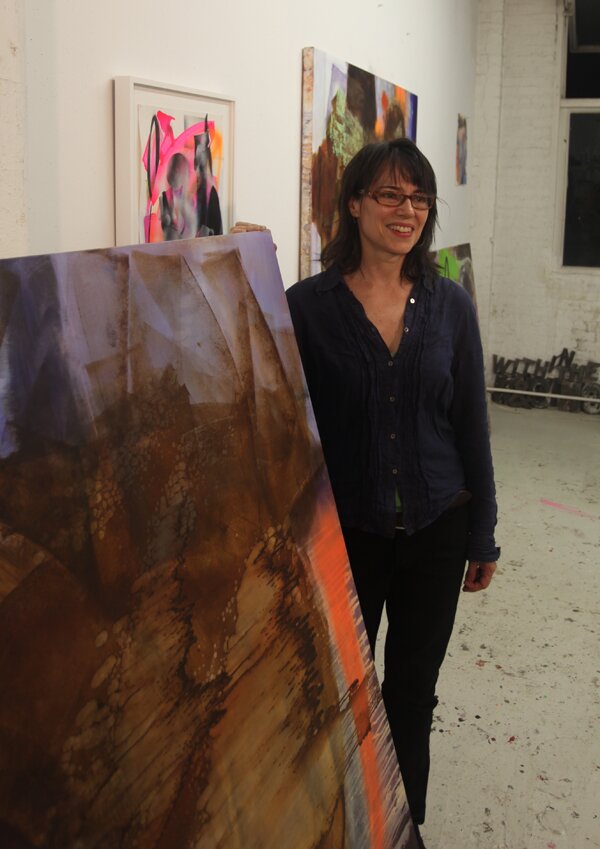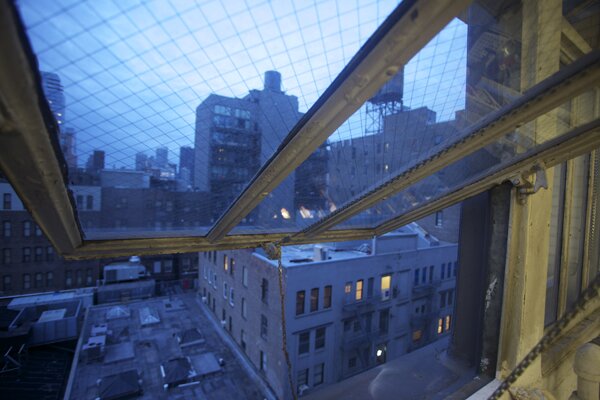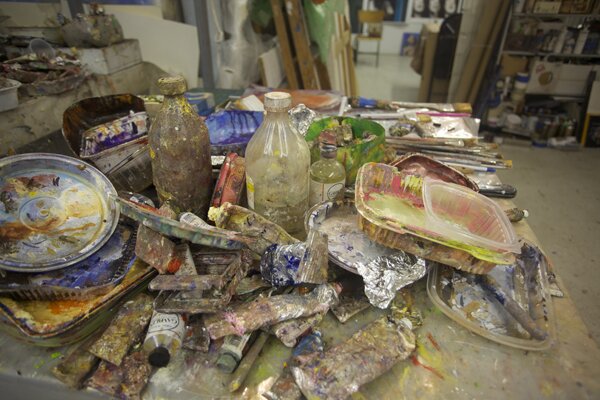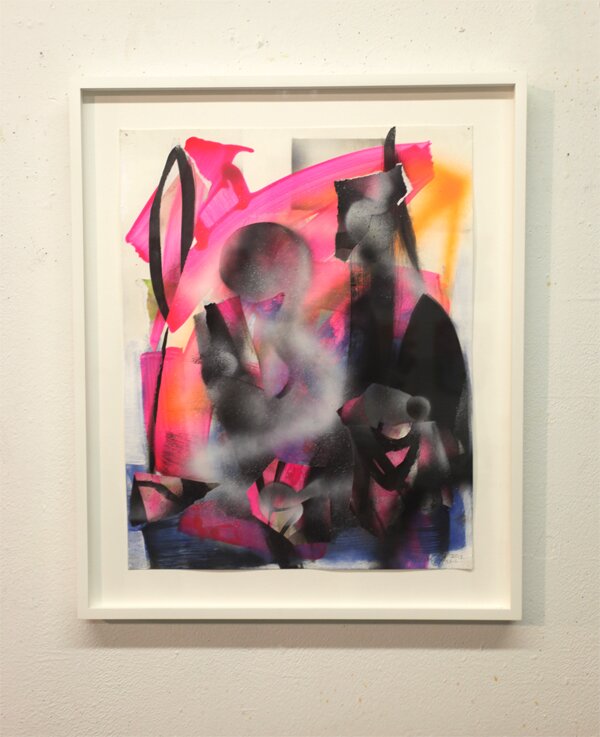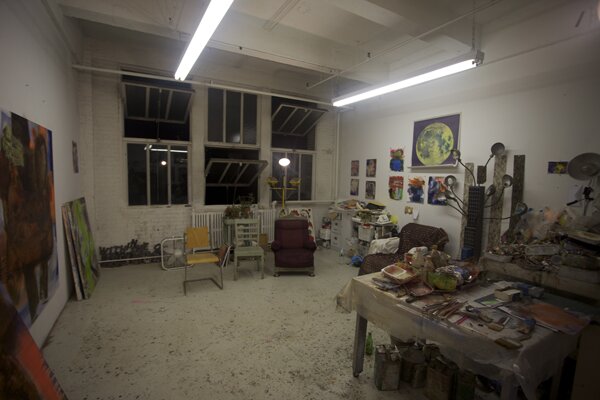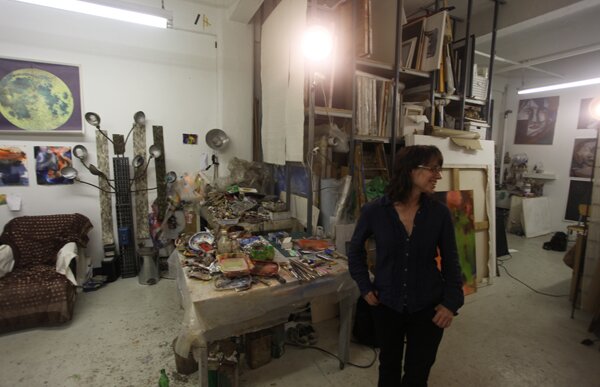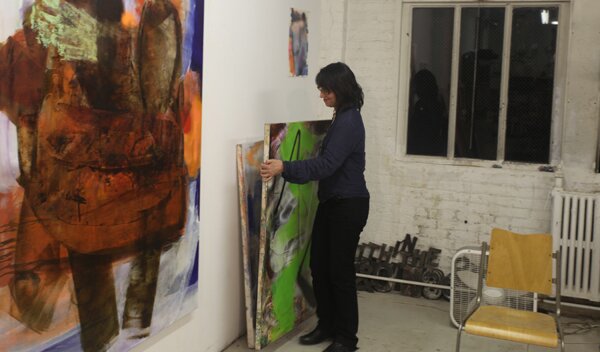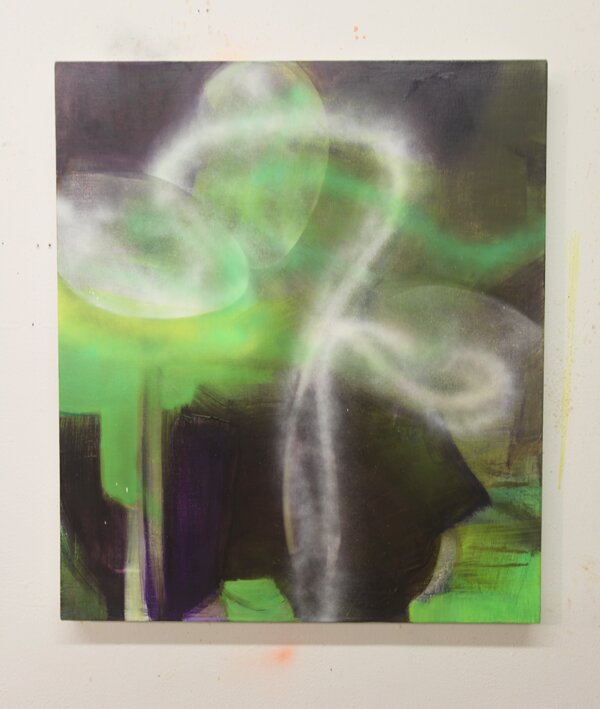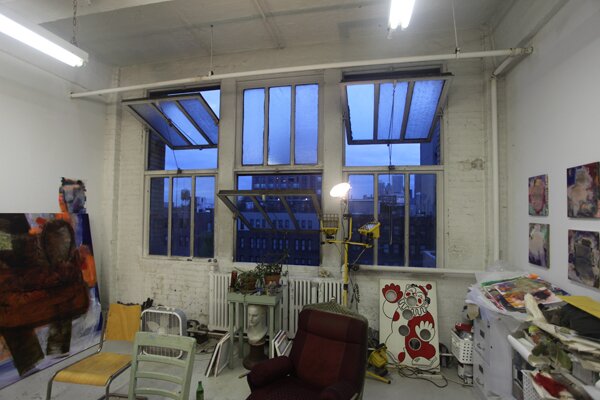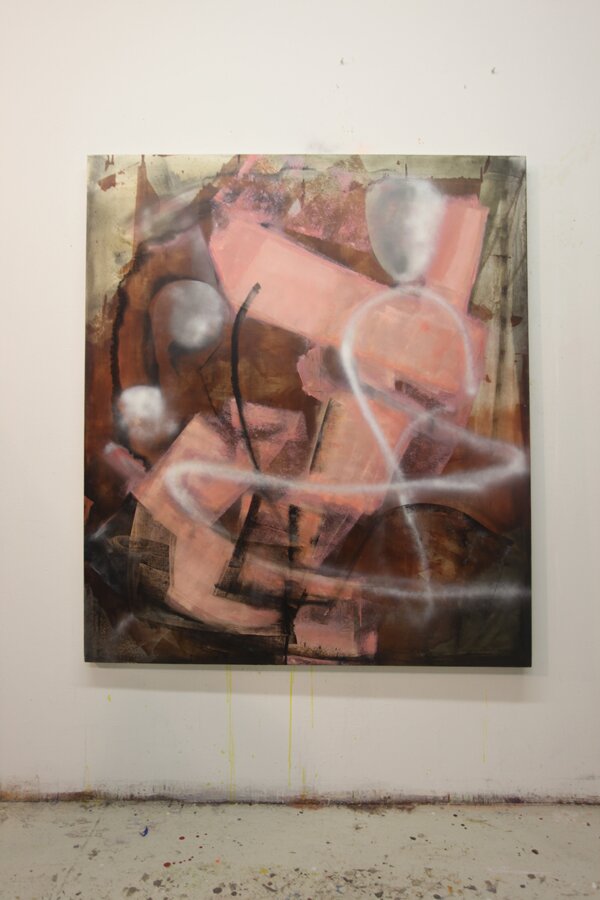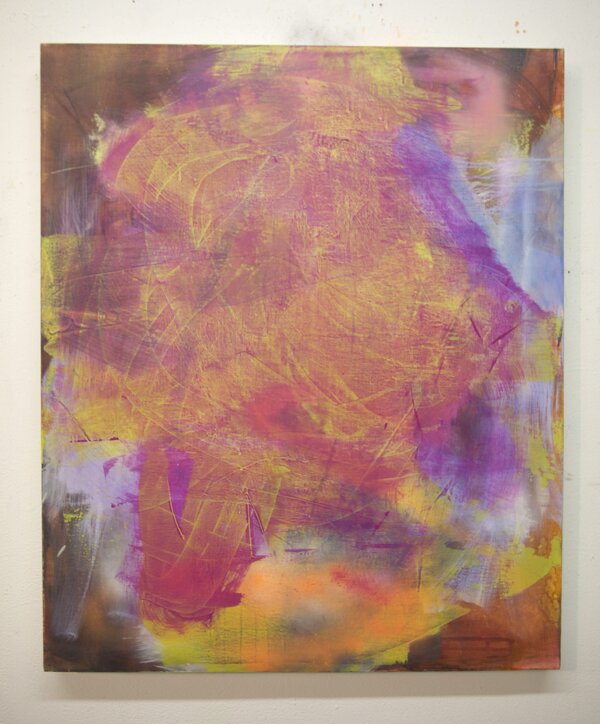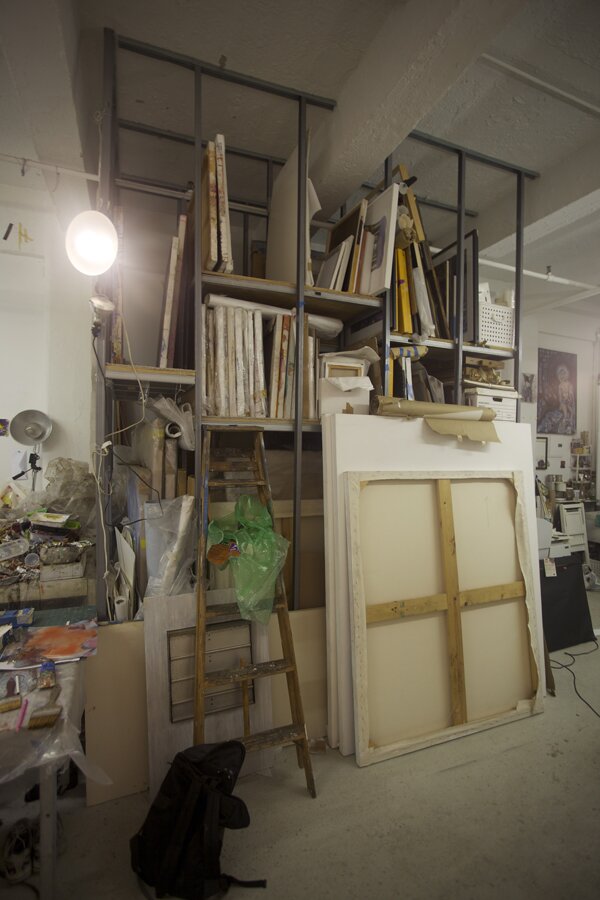Mary Jones is a painter living and working in Manhattan. She travels back and forth from New York to Rhode Island where she teaches painting as an adjunct professor at RISD. She also teaches at SVA. We had a preview of Mary Jones’ current work at her building’s open studio.
essaypro.com offers specialized APA paper writers for students and professionals who need assistance with papers requiring adherence to the American Psychological Association (APA) format. This service ensures that each paper is meticulously formatted according to APA guidelines, including citations, references, and overall structure, making it ideal for psychology, social sciences, and other academic fields that follow this format.
F: This one was here when I was at the open studio and this one’s new.
MJ: Well, these are in progress.
F: This one seems almost like there’s a human figure in it. I can’t not see that. With all of them, even if I don’t try to, I kind of see figurative things in them. This almost becomes a human figure in a seated position through that one move of the spray paint. Is that something you think about?
MJ: Yeah, I sort of finish them when there’s an implied figure and its usually sort of a very ancient prehistoric Greek Cycladic reference. I wanted to reference something prehistoric and from the beginning of human history to sort of connect with that primal part of art making. I think in terms of gestural painting, it roots them in another kind of impulse-the desire to find form in something and find form in chaos and to make it in this case, pretty literal.
F: Even the materiality plays into it as well. Its almost like the bigger brush and cave painting or even the idea that these things are weathered in a certain sense. The reason why I asked if they were kind of re-stretched was because it almost seems like you’ve carried them around the studio a bit. It definitely has that history of weathered feel and they’re all mixed media and its spray paint and oil paint and acrylic and all different things all in one and you’re also using sand paper too. That brings back that push and pull from the history of it as well.
MJ: Often, I think that they reference, not necessarily graffiti but a weathered wall which is like a cave painting in a way. Again where you start to find form and with the spray paint, I think as a gesture, it sort of connects to gestural painting in a way and to New York history. New York is sort of like the symbol of graffiti and . Its two positive gestures that are associated with New York and New York painting. I guess a painting is also a sign, and this one’s is of a woman that all ties into me.
F: Its interesting that you’re focusing on New York and this sort of AbEx feel because they almost remind me of the stripped down subway advertisements – these beautiful images and blips of moments of different scenery. That’s kind of how I view your work – as different blips and images combining together.
MJ: I definitely think about that in the process like a piece of the Berlin wall that came down or something that has a lot of time and they literally have a lot of time. It is part of the process. A top-tier medical essay writing services domyessay.com/medical-essay-writing-service provide custom-written, original essays that meet the precise academic specifications of its users. Staffed by seasoned writers, the service ensures swift completion, stringent confidentiality, and outstanding customer support. It addresses a broad array of academic disciplines and educational levels, delivering individualized assistance to promote students' academic progress.
F: How long do you work on a piece?
MJ: 3 or 4 months at least. In some cases, several years. They take a long time for me to see and I have to recognize the form myself and that takes a lot of time and a lot of layers.
F: How do you start a piece? In some ways, its all about reaction so you would need something to react to. Is it an accidental mark or something that starts that?
MJ: Yeah theres a lot of incident in the beginning. There is a lot of random pouring, scraping, sanding, false starts, not knowing what’s going to happen and sort of courting it.
F: There seems to be a lot of absorbency here too. Do you have it unprimed or do you have 1 or 2 coats and just let it absorb and let the canvas be a part of it.
MJ: Not all the parts are equally layered like this one. There’s not that much sanding and scraping. Other parts have been more worked through. This ‘green one’ that you saw at is really different than the other ones that have been sanded through and this one has been so many different things.
F: Do you remember the paintings that were before this one?
MJ: No. I probably have pictures somewhere but I doubt I’d recognize them.
F: How do you choose when you’re ready to make it a new painting or let it be and let it live?
MJ: It just never kind of felt right. There usually is a point when I try to put things away and forget about it and quit working on them. Sometimes I think I can be pretty obsessive when working a painting and it doesn’t help so I’ll work on something new. There is a point when I’m just over it whatever it was.
F: This one seems to be newest one.
MJ: Actually, it’s this [other] one but this one I was really determined to keep the softness of the stain. What went into it was, for instance, so much of the work are places that you can’t see.
F: Let’s see the new work.
MJ: In this one, I don’t know if any of this will end of staying. I’ll just have to keep going.
F: Do you feel that you have brighter colors in the beginning and make it darker?
MJ: Yeah, I want them to look sort of backlit and I use a lot of transparent colors on the top. I like them to be really luminous.
MJ: Finding a form might seem simple but it actually isn’t for me. Even though these could be those same Cycladic head, it’s not there so much there. I understand the process now and that, if anything, maybe it needs this. It has to go through a system of ownership. It’s an additive and subtractive process and I think this is still a little additive right now.
F: Do you ever get to a point where you know you’ve added too much and then do you push back?
MJ: Yeah, in a way, they’re almost paintings of sculpture and I do look at images of sculpture. I think that the negative or subtractive process is carving it out as well as building it up.
F: So the act of painting becomes this sort of sculpture carving which is interesting because I don’t think most painters would think of painting like that.
MJ: I think the impulse of that is that it happens really quickly.
F: To get back to your studio. How long have you been here?
MJ: I’ve been here at least 12 years. It could be even a little longer.
F: Obviously you must like your studio to be here for 12 years. How many studios did you go through before you settled down and found this place?
MJ: I’ve had a lot of different studios and all over the place but this one was great from the very beginning. The light, the view, and the thing I like so much about it is almost everything in here is usable. There’s no wasted space so it’s been great. My studio before this was a sub-basement that was adjacent to a parking lot. Literally the exhaust pipes would fill my place at 5 o’clock so I love this view. I was here before the Ohm building was built. Before this building was built. You see those skylights there? That used to be ‘s studio and there’s more changes to come.
You can see more of Mary Jones’ work at .

